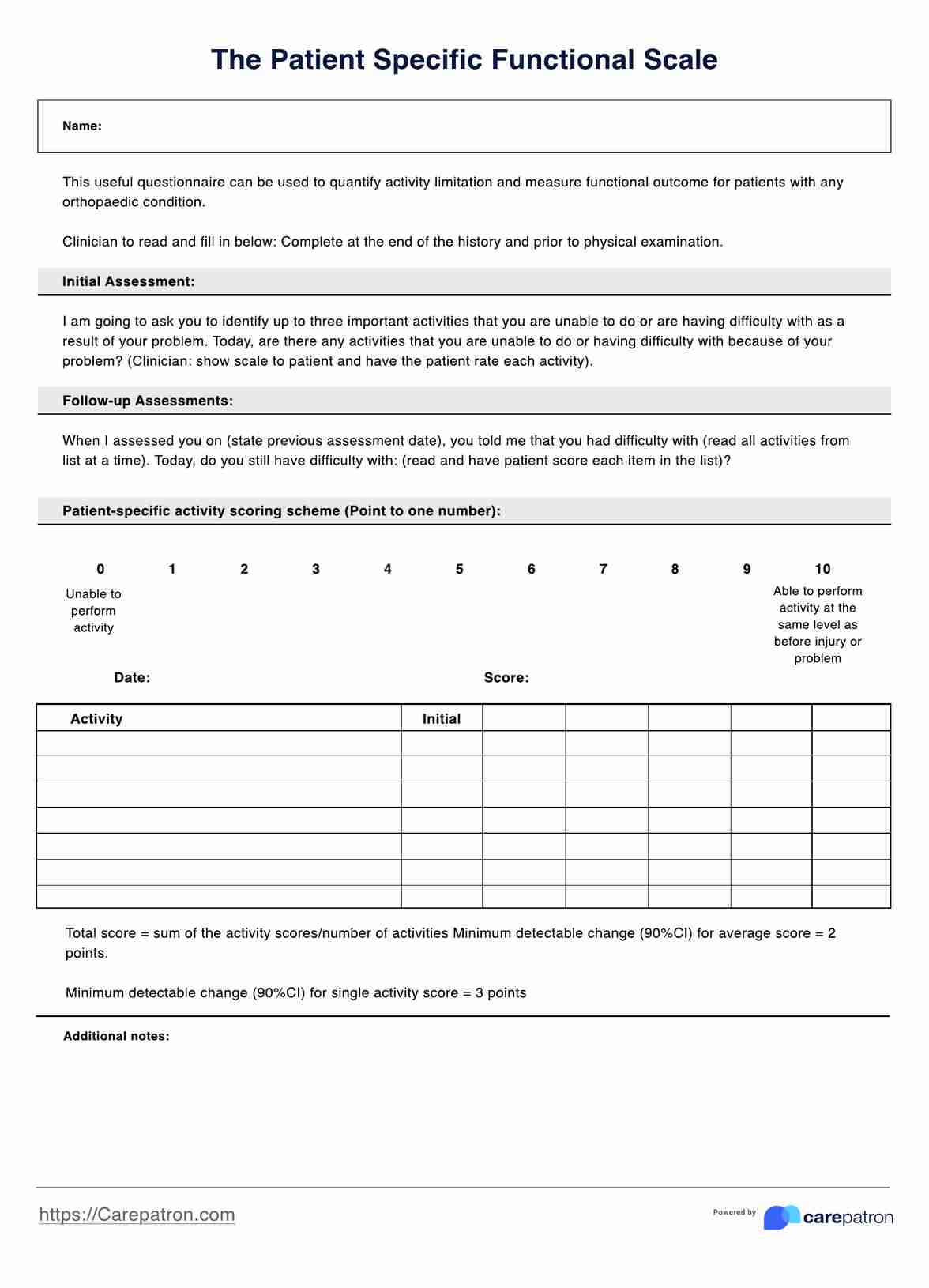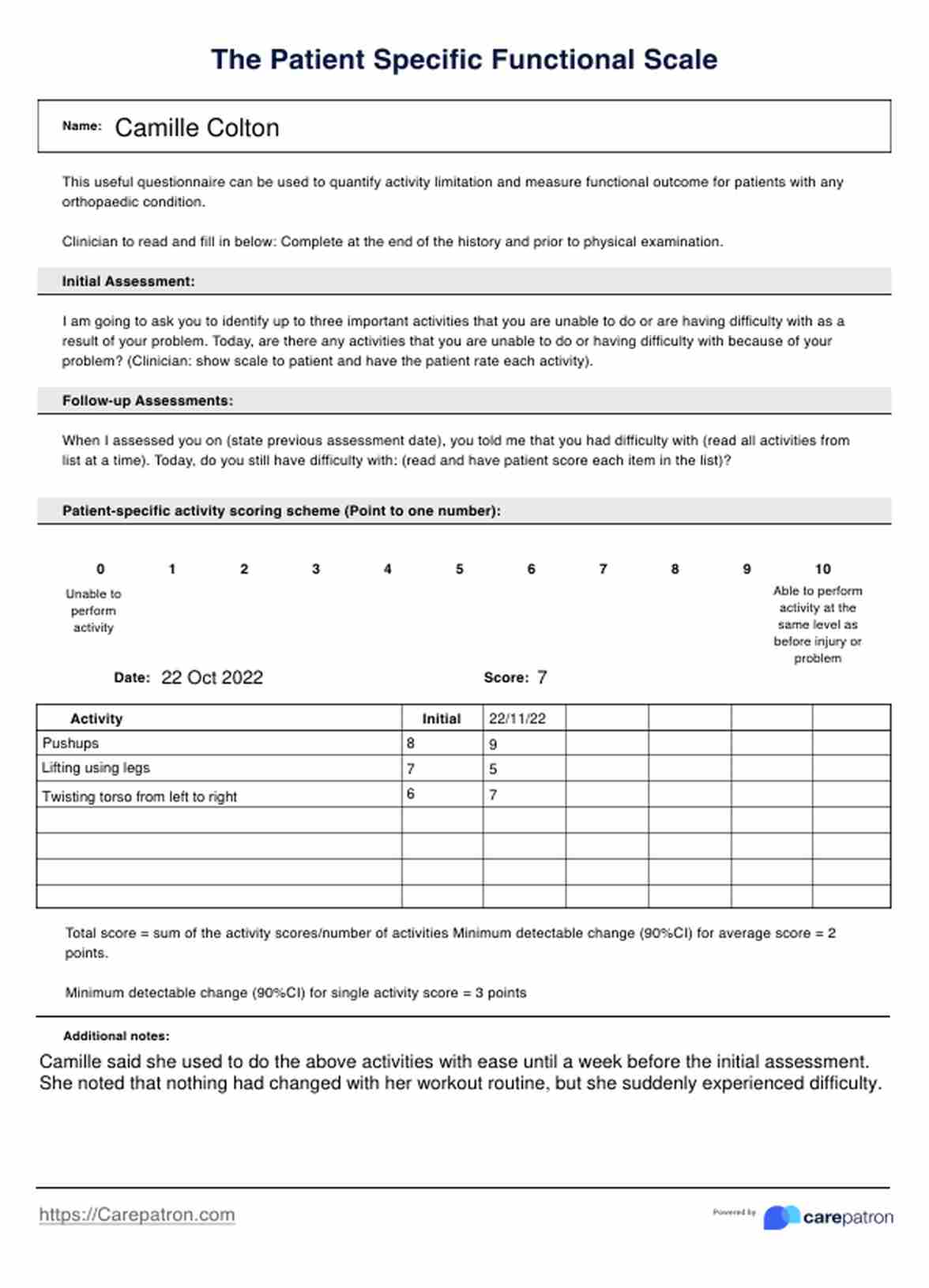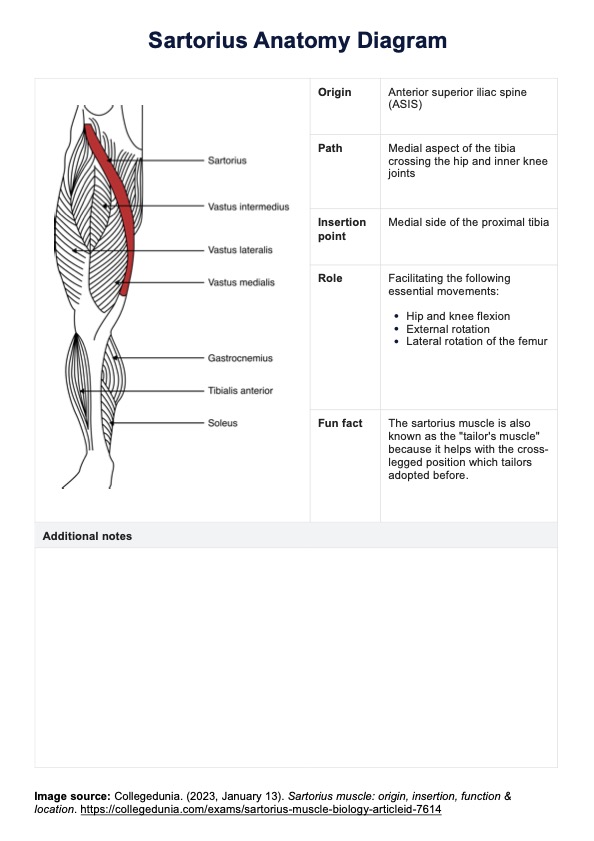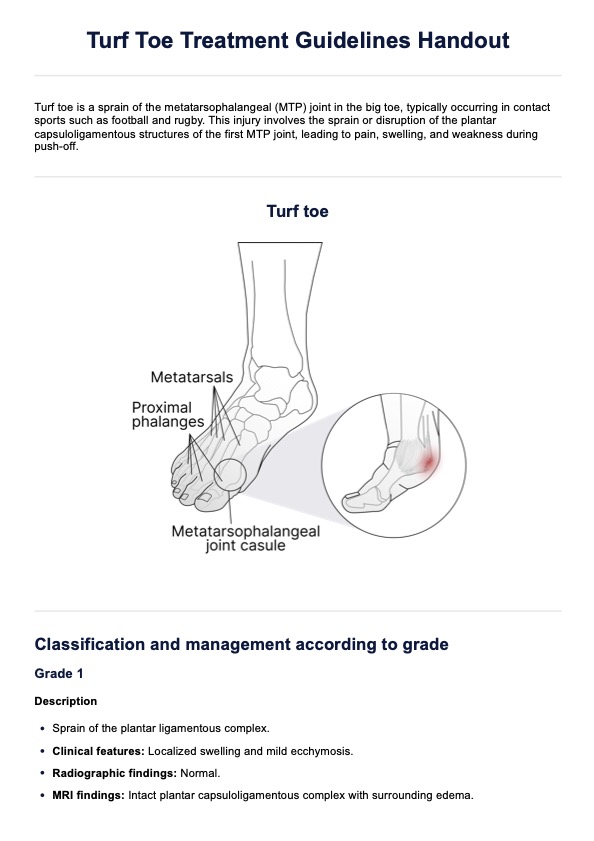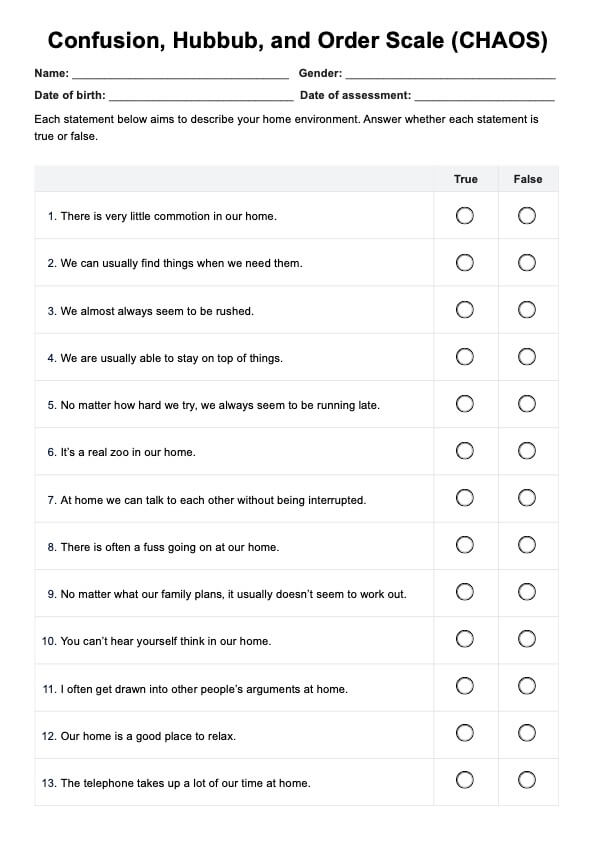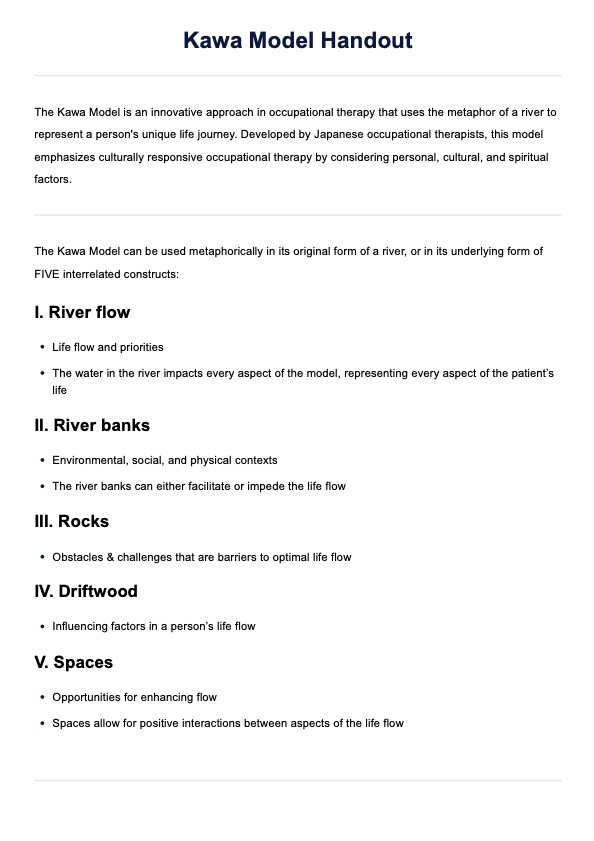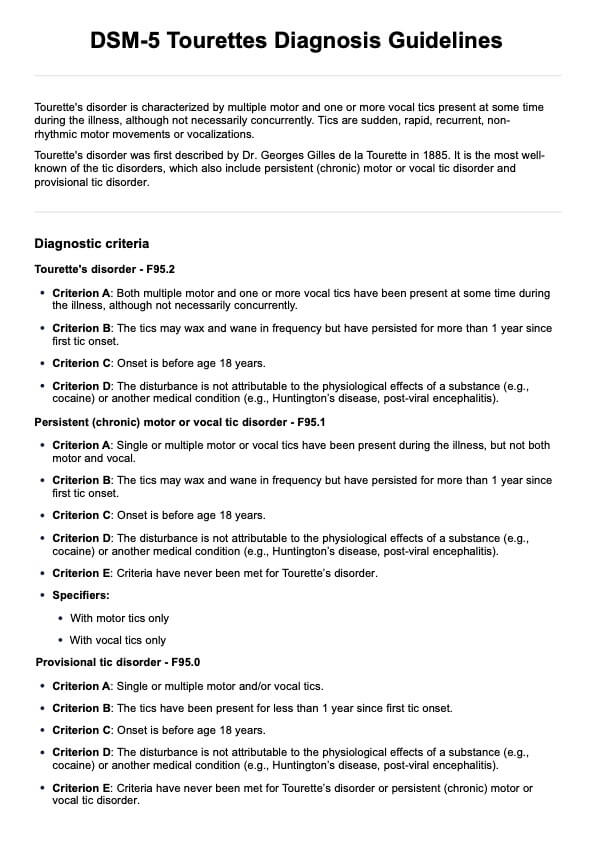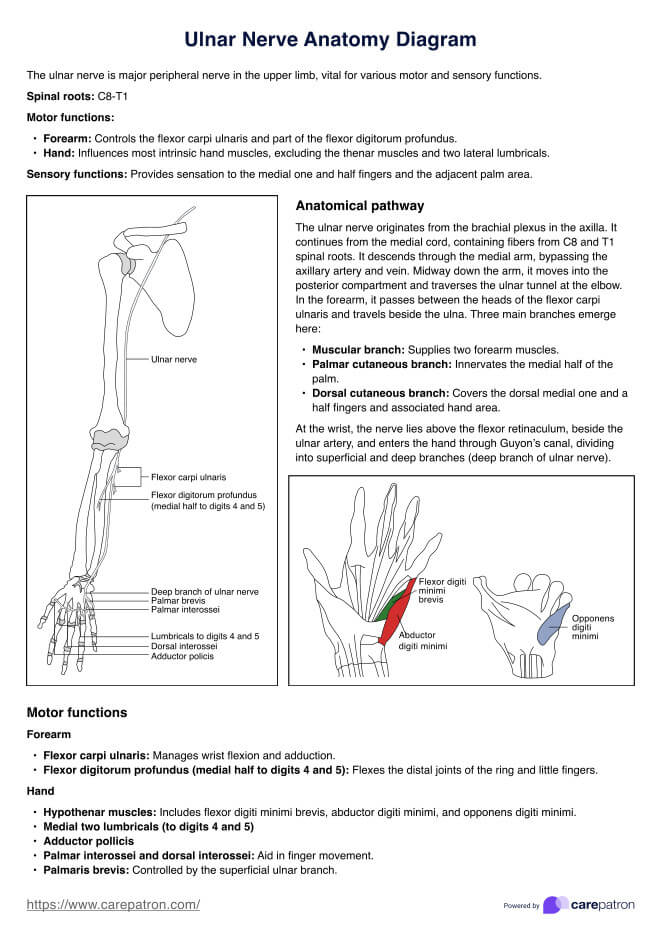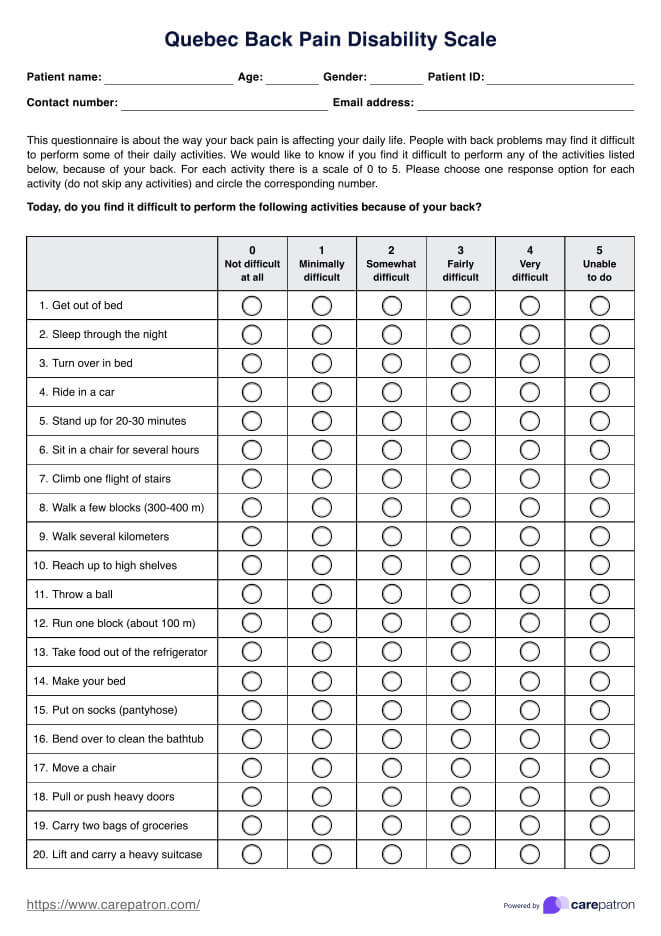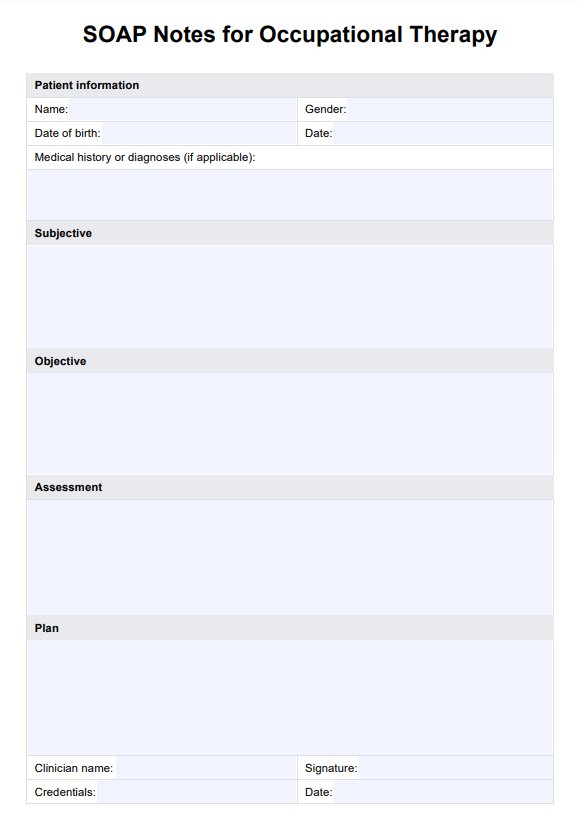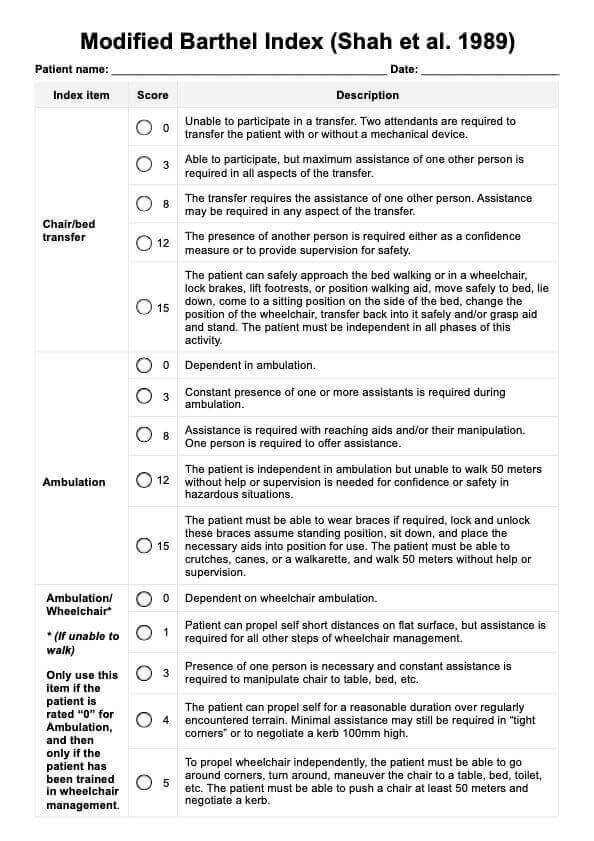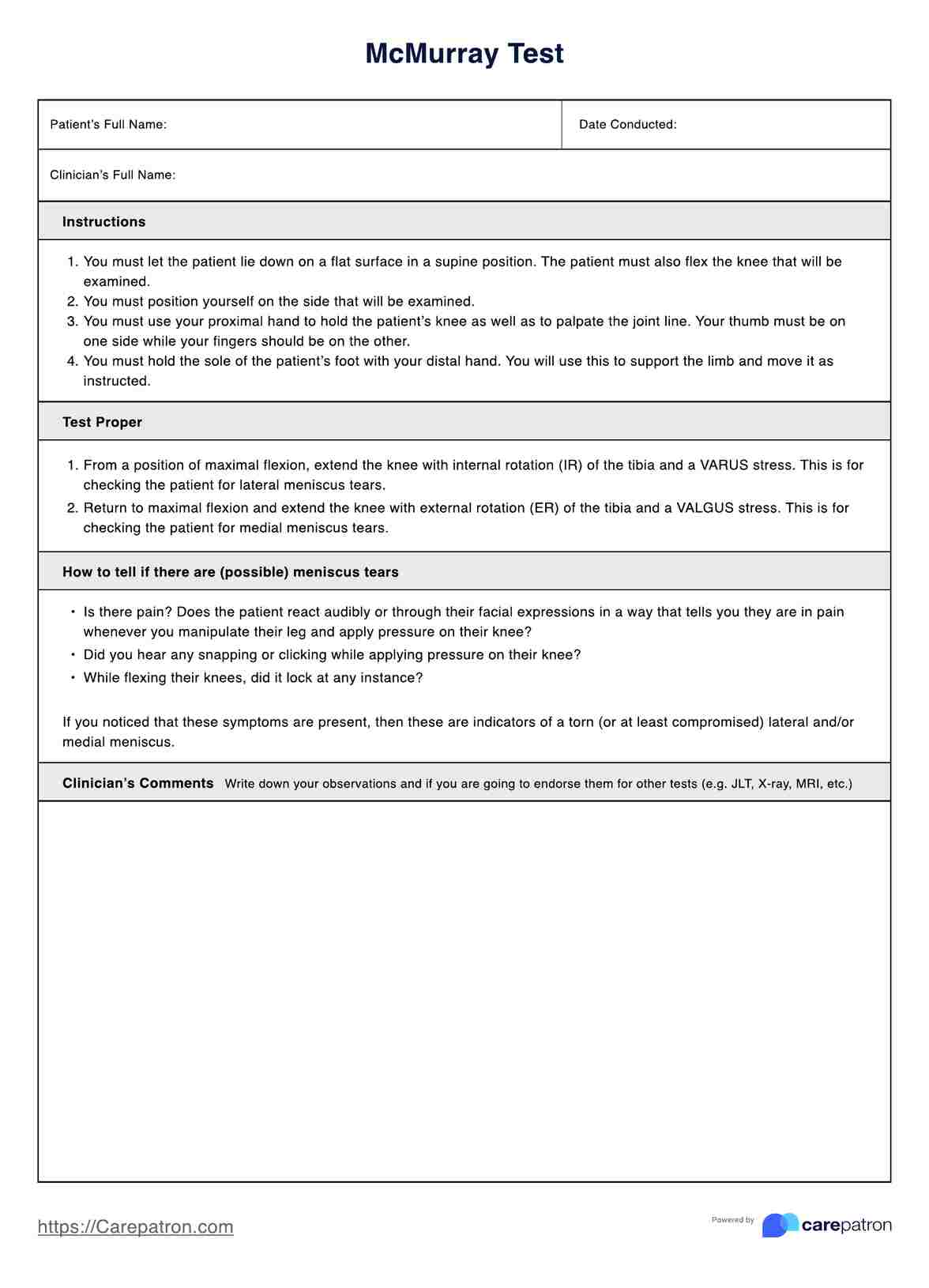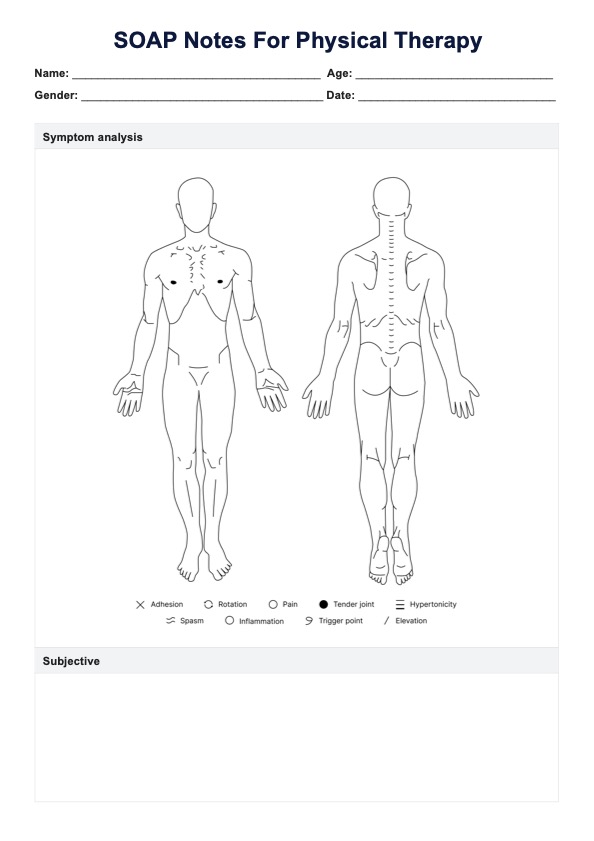Patient Specific Functional Scale
Read about Patient Specific Functional Scale (PSFS) and understand its use. Download a free PDF template and example for your own use.


What is a Patient Specific Functional Scale?
Body pain and injury are common among people of all ages, but the intensity of pain and recovery can vary from person to person. This is where the (PSFS) comes into the picture. It is a comprehensive evaluation tool that helps medical professionals collect, organize, and store information to assess an individual's functional capabilities.
Healthcare professionals often utilize the PSFS to uncover patient limitations in their daily activities. Patients are asked to identify up to 5 tasks they cannot do and rate each on an 11-point scale, ranging from 0 (unable) to 10 (fully capable). This helps healthcare professionals gain valuable insight into what everyday tasks may be challenging for them.
Periodic visits and assessments like PSFS are essential to ensure the best possible care. Check-ins can be every six months or more regularly, depending on individual needs.
Patient Specific Functional Scale Template
Patient Specific Functional Scale Example
How to use this Patient Specific Functional Scale
To use the PSFS, follow these simple steps:
Step 1: Download the scale
Access the Patient Specific Functional Scale using the link on this page. You can also get it on the Carepatron app or our resources library.
Step 2: Explain the test
Before you start, ensure the patient understands what it is and how long it will take. Give them enough time to get comfortable before administering the PSFS.
Step 3: Begin the initial assessment
Once the patient is ready, start the test. Ask them to identify up to five activities they find tough to accomplish due to their issue. Have them rate how challenging each one is on a scale from 0-11.
Step 4: Interpret the results
After the assessment, go through the results with the patient. Discuss any troubling activities and which ones need to be focused on for improvement.
Step 5: Keep the file safe
Finally, document the results of the PSFS in your patient's file. This will help you track progress and compare baseline data over time. Make sure to store the file in a secured location for compliance purposes.
Step 6: Next steps
Have your patient undergo further assessment if you deem it needed. Tests you can use to evaluate them are the numeric pain rating scale (NPRS), which is a test that commonly complements the PSFS, and lower extremity functional scale.
When would you typically use this PSFS?
The Patient Specific Functional Scale is commonly used in physical therapy and rehabilitation settings to identify functional limitations in an individual. It can help medical professionals to:
Evaluate a patient's overall functional capabilities
The PSFS can provide valuable insight into a patient's abilities and what activities they are (or are not) able to do. This information can help healthcare professionals understand the patient's functional capabilities.
Monitor progress and improvement in a patient's condition
Using the PSFS, healthcare providers can determine a patient's functional status and compare changes over time. More specifically, this test can be used onpatients who present with musculoskeletal disorders like chronic low back pain, knee dysfunction, and neck dysfunction. Based on the information gathered, they can track an individual's progress and decide on their treatment plan.
Develop more effective rehabilitation
Using the PSFS, medical professionals can create comprehensive rehabilitation plans tailored to a patient's specific needs. They will be more likely to achieve positive results and reach recovery goals.
Who can use these Printable Patient Specific Functional Scales?
The Patient Specific Functional Scale is a handy tool used by heaps of healthcare professionals, including:
- Physical therapists
- Occupational therapists
- Rehabilitation specialists
- Sports medicine specialists
- Physiotherapists
- Chiropractors and Orthopedic surgeons
Why is this assessment popular with physical therapists?
The PSFS is an invaluable tool for physical therapists as it helps them identify functional limitations and develop rehabilitation plans for a patient's needs. Physical therapists also use this scale because:
It is easy to use and understand
The PSFS requires minimal training and can be quickly completed in the clinic setting. This means you can save time and get quick, accurate results.
It provides insight into a patient's functional capabilities
The PSFS is designed to measure a patient's abilities in everyday activities. It can help you better understand a patient's condition and create more effective treatment plans.
It provides reliable and objective results
Regarding construct validity, the PSFS' proves to be more reliable than the neck disability index for particular radiculopathy. Aside from that, its objective results can be tracked and compared over time. This helps you measure the efficacy of their treatment plans and track a patient's progress.
.png)
Benefits of free Patient Specific Functional Scale
This free Patient Specific Functional Scale is an incredibly useful tool for physical therapists and other health professionals. Here are some of its key benefits:
Completely digital and printable
You can access the test using the link on this page and use it right away. Similarly, you can print it out and keep it handy when assessing a patient in the clinic.
Easy to use
This assessment is easy to complete and understand, making it ideal for busy healthcare professionals who want reliable results quickly.
Improved communication between you and your patient
By using the PSFS, you can better explain a patient's condition and help them understand what they need to do to rehabilitate. This lets your patient feel more in control of their physical therapy experience.
Track progress easily
The PSFS enables you to track a patient's physical function consistently and helps you identify areas that may need more work. In turn, you can customize treatment plans and maximize results.
References
Cleland, Joshua A. DPT, OCS*; Fritz, Julie M. PT, PhD, ATC†; Whitman, Julie M. PT, DSc, OCS, FAAOMPT‡; Palmer, Jessica A. SPT*. The Reliability and Construct Validity of the Neck Disability Index and Patient Specific Functional Scale in Patients With Cervical Radiculopathy. Spine 31(5):p 598-602, March 1, 2006. | DOI: 10.1097/01.brs.0000201241.90914.22
Stratford, P., Gill, C., Westaway, M., & Binkley, J. (1995). Assessing disability and change on individual patients: a report of a patient specific measure. Physiotherapy Canada, 47, 258-263.
Commonly asked questions
The Patient Specific Functional Scale measures a patient's ability to perform everyday activities such as walking, climbing stairs, turning in bed, and more.
The PSFS aims to provide insights into a patient's functional abilities and help healthcare professionals develop more effective rehabilitation plans.
The PSFS is most commonly used by physical therapists, occupational therapists, and other healthcare professionals to help assess a patient's physical function. It can be used both in the clinic and during a home visit.


